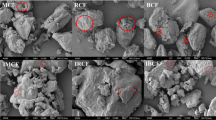Summary and Conclusions
Results obtained from alkaline cooking experiments show that all of the four variables studied—cooking mousture content, temperature, time and flake thickness—influenced the properties of the resultant meals in varying degrees. Under the experimental conditions used a high initial moisture content, above 18%, is necessary to lower the free gossypol content in the finished meal to less than 0.04%. When this amount of moisture is used, a plastic mass results at the beginning of the process which requires special equipment to supply the mechanical action necessary to break the pigment glands at a low temperature. In the presence of high moisture content and alkali the gossypol, which is released when the glands are ruptured, is bound to the meal. When sufficient initial moisture is present (24–31%), only traces of gossypol (0.010% or less) are found in the extracted crude oil.
High temperatures in the presence of high moisture content reduce the solubility of the meal protein (in 0.02N NaOH). Under the conditions of moisture, temperature, and time of cooking used in the experiments the maximum nitrogen solubility obtained under conditions necessary to produce low free gossypol content was 64%. This differs from results obtained in previous work performed under different conditions. A probable reason for the difference is given based on the interrelationship of the three variables.
The results demonstrated further that finer comminution of the raw meats by rolling to 0.005-in. thick flakes results in lower free gossypol content in the finished meal and lower gossypol content of the oils as well as more complete removal of the oil by the filtration-extraction procedure used.
Similar content being viewed by others
References
American Oil Chemists' Society, “Official and Tentative Methods of Analysis”, 2nd ed. rev. to 1955, Chicago, 1946–55.
Gore, W. L., Ind. Eng., Chem.43, 2327–8 (1951).
Graci, A. V. Jr., Spadaro, J. J., Paredes, M. L., D'Aquin E. L., and Vix, H. L. E., J. Am. Oil Chemists' Soc.,32, 129–131 (1955).
King, W. H., Wolford, L. T., Thurber, F. H., Altschul, A. M., Watts, A. B., Pope, C. W., and Conly, Jean, J. Am. Oil Chemists' Soc.,33, 71–74 (1956).
Linteris, L., and Handschumaker, E., J. Am. Oil Chemists' Soc.,27, 260–264 (1950).
Lyman, C. M., Chang, W. Y., and Couch, J. R., J. Nutrition,49, 679–690 (1953).
Pons, W. A. Jr., Hoffpauir, C. L., and O'Connor, R. T., J. Am. Oil Chemists' Soc.,27, 390–393 (1950).
Pons, W. A. Jr., Hoffpauir, C. L., and O'Connor, R. T., J. Am. Oil Chemists' Soc.,28, 8–12 (1951).
Youden, W. J., Ind. Eng. Chem.,46, No. 6, 115A-116A (1954).
Author information
Authors and Affiliations
Additional information
One of the laboratories of the Southern Utilization Research Branch. Agricultural Research Service, U. S. Department of Agriculture.
About this article
Cite this article
King, W.H., Knoepfler, N.B., Hoffpauir, C.L. et al. Pilot plant development of the alkali cooking process for cottonseed meats. I. Effect of flake, thickness and of time, temperature, and moisture content during cooking. J Am Oil Chem Soc 34, 27–30 (1957). https://doi.org/10.1007/BF02637933
Received:
Issue Date:
DOI: https://doi.org/10.1007/BF02637933




